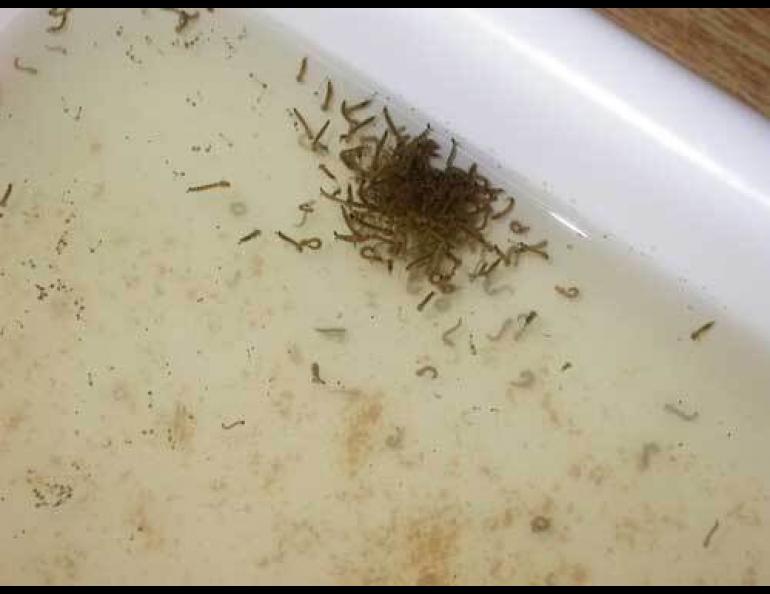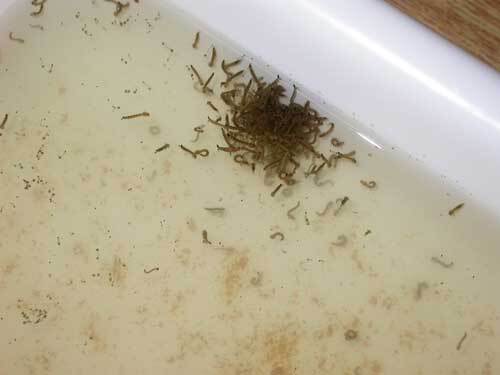
Raising mosquitos in the name of science
Alison Triebenbach is probably the only person in Alaska with the “Manual for Mosquito Rearing” on her bookshelf.
In a windowless room behind two locked doors on the University of Alaska Fairbanks campus, 1,000 mosquitoes feed on blood (“donated from an unlucky sheep in a lab down south”) and artificial plant nectar provided by Triebenbach, a graduate student at UAF. Seven days a week, she feeds adult mosquitoes and their waterborne larvae and pupae (which prefer fish food and rabbit pellets), collects tiny eggs, and nurtures those eggs into mosquitoes.
“When people learn that I rear mosquitoes, first they ask me why. And then they say they want to kill them,” Triebenbach said.
“That’s worse than being a lawyer,” a man said when he heard how Triebenbach is earning her master’s degree.
So, why does Triebenbach brood over creatures so annoying that even the gentlest Alaskan murders as many as possible? She’s studying disease transmission by the mosquito, a creature that has led to the deaths of millions of people.
None of the 30-or-so mosquito species in Alaska are known to carry any disease that harms humans, so Triebenbach imports her mosquitoes from a lab in Fort Collins, Colo. She tends to Aedes aegypti, the mosquito that spreads yellow fever, and Anopheles gambiae, which carries malaria in much warmer places. She keeps a few hundred of each species in several screened boxes and their larva and pupal stages in water-filled plastic trays.
Triebenbach is seeing if her mosquitoes can carry diseases such as tularemia, a disease in rabbits and hares that can spread to humans. She’s added the tularemia-bacteria to some mosquito meals; she wants to see if the mosquitoes are picking it up and could perhaps transfer it when they bite. Here’s where she indulges in the instinctive human satisfaction of killing mosquitoes.
“But I don’t slap them,” she wrote in an e-mail message. “I simply put their cage in the freezer and wait for them to fall into a deep sleep. After they’re frozen I grind them up and extract their DNA to see if any of the bacteria’s DNA is inside the mosquitoes.”
So far, she’s found that some larvae of the Aedes mosquito have eaten the bacteria, but they seem to lose it between their larval and pupal stages, perhaps as they shed the lining to their stomachs in the transformation.
Because her mosquitoes aren’t native to Alaska, Triebenbach takes measures to prevent them from getting out the door. The room with the mosquitoes has a screened “arctic entry” with its own door, a bug zapper, and a can of insecticide nearby. If a mosquito should escape out into the hall and make the long journey outside, interior Alaska would take care of it, as both species can’t tolerate cold.
“If they were to escape, they’d die,” Triebenbach said.
As she completes her studies, Triebenbach tends to her buzzing little charges, keeping them alive through their short lives of weeks to months, and then nurturing their offspring. She keeps it up all year, even in the bluish light of mid-winter, when the air outside is 40 degrees below zero and the outdoor mosquitoes, the Alaska ones, are either hibernating or dead.




